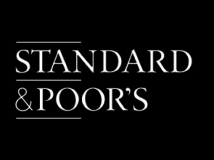
Bron
S&P
S&P Global Ratings is seeking market feedback on two proposed evaluation tools, separate from its credit ratings, that are intended to assess risks to sustainability at both the individual project and corporate entity levels. White papers on both frameworks are available at www.spratings.com/infrastructure and market participants are invited to submit comments through brief feedback surveys that may be accessed through www.spratings.com/greenbonds andwww.spratings.com/esg.
The new assessment tools include a new Green Bond Evaluation tool that would analyze and estimate the environmental impact of projects or initiatives financed by bonds, and an Environmental, Social, and Governance (ESG) Evaluation Framework and methodology for corporate issuers.
“In response to growing market interest, we believe that our proposed tools will offer a unique assessment of risks associated with sustainability over the medium- to long term,” said Michael Wilkins, Head of Environmental & Climate Risk Research and an infrastructure ratings analyst at S&P Global Ratings. “Investors have told us that they want to develop more meaningful insights into the environmental, social, and governance characteristics of individual debt securities and corporate entities. We believe these two approaches will help to achieve that goal.”
GREEN BOND EVALUATION AND ASSESSMENT
The proposed Green Bond Evaluation methodology would consider projects that aim to mitigate climate change through greenhouse gas reduction, and adaptation projects that mitigate the impact of natural catastrophes. The proposed evaluation would consist of at least three scores–a Transparency score, a Governance score, and a Mitigation and/or Adaptation score. This approach would assess a bond financing against each category, with the resulting scores weighted and amalgamated into a final Green Bond Evaluation.
ESG EVALUATION AND ASSESSMENT
The proposed ESG evaluation framework would gauge a company’s impact on the natural and social environments it inhabits, the governance mechanisms it has in place to oversee those effects, and potential losses it may face as a result of its exposure to these risks.
The ESG Assessment will aim to rank issuers on a five-point scale based on the degree of an issuer’s exposure to ESG risk factors over a two- to five-year horizon and beyond. As currently envisaged, medium-term (two to five-year) and long-term factors will receive different weightings under the proposed methodology, with medium-term risks receiving a greater weighting due to the more apparent nature of the factors and their likely impact.
While the proposed tools are not credit ratings or an assessment of creditworthiness, they draw on S&P Global Ratings’ significant and ongoing engagement with the market on environmental, social, and governance issues and green bond financings. In May 2016, S&P Global Ratings expressed support for initiatives being promulgated by the United Nations Principles for Responsible Investment (UN-PRI) that recognize the needs of investors for greater clarity on how ESG factors are considered in credit analysis. In January 2016, Michael Wilkins was named a member of the Financial Stability Board (FSB) Task Force on Climate-related Financial Disclosures, an industry-led body that is developing voluntary climate-related financial disclosure standards.



